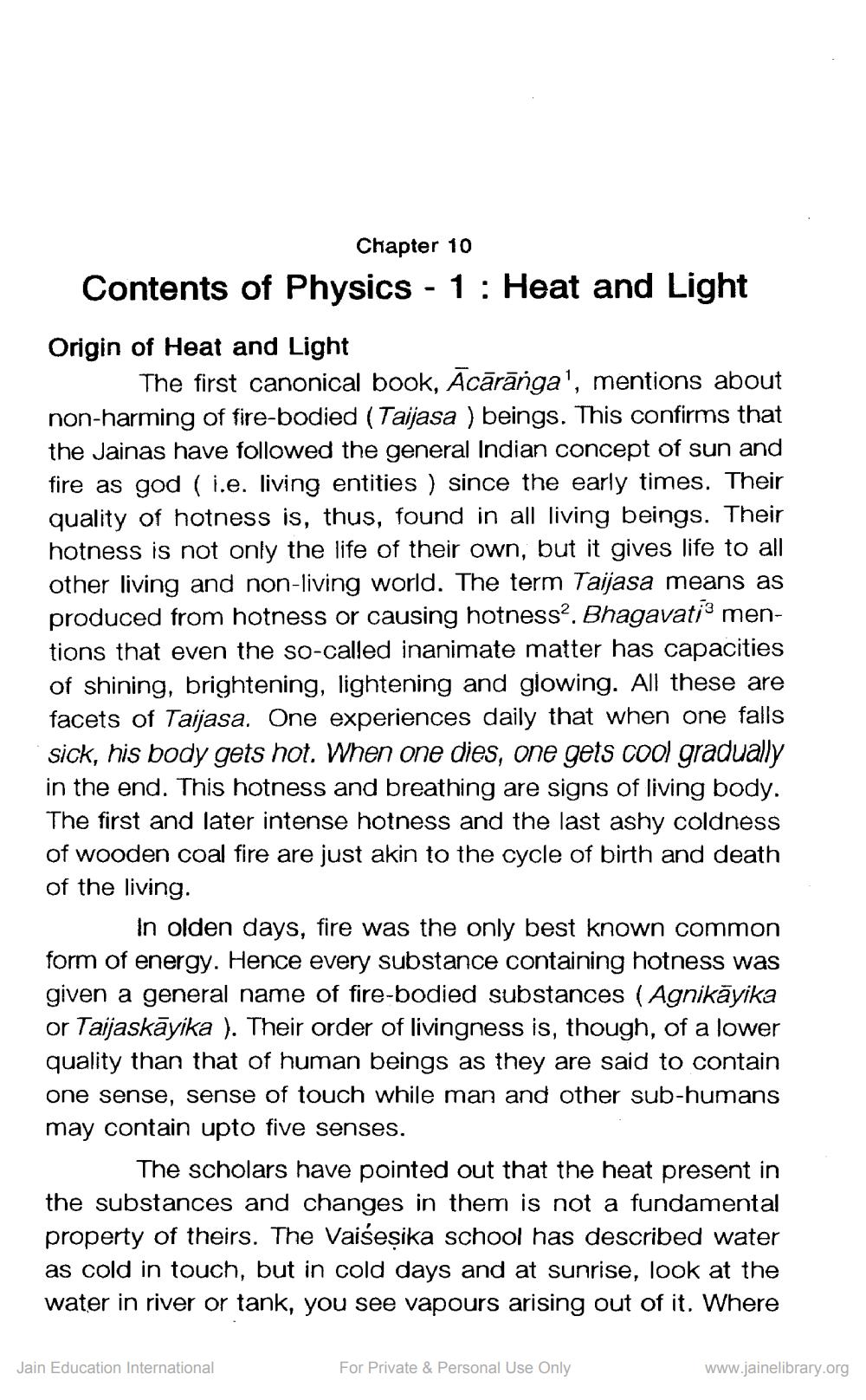________________
Chapter 10
Contents of Physics - 1 Heat and Light
Origin of Heat and Light
The first canonical book, Acārānga1, mentions about non-harming of fire-bodied (Taijasa) beings. This confirms that the Jainas have followed the general Indian concept of sun and fire as god (i.e. living entities) since the early times. Their quality of hotness is, thus, found in all living beings. Their hotness is not only the life of their own, but it gives life to all other living and non-living world. The term Taijasa means as produced from hotness or causing hotness2. Bhagavati3 mentions that even the so-called inanimate matter has capacities of shining, brightening, lightening and glowing. All these are facets of Taijasa. One experiences daily that when one falls sick, his body gets hot. When one dies, one gets cool gradually in the end. This hotness and breathing are signs of living body. The first and later intense hotness and the last ashy coldness of wooden coal fire are just akin to the cycle of birth and death of the living.
In olden days, fire was the only best known common form of energy. Hence every substance containing hotness was given a general name of fire-bodied substances (Agnikāyika or Taijaskāyika ). Their order of livingness is, though, of a lower quality than that of human beings as they are said to contain one sense, sense of touch while man and other sub-humans may contain upto five senses.
The scholars have pointed out that the heat present in the substances and changes in them is not a fundamental property of theirs. The Vaiseṣika school has described water as cold in touch, but in cold days and at sunrise, look at the water in river or tank, you see vapours arising out of it. Where
Jain Education International
For Private & Personal Use Only
www.jainelibrary.org




